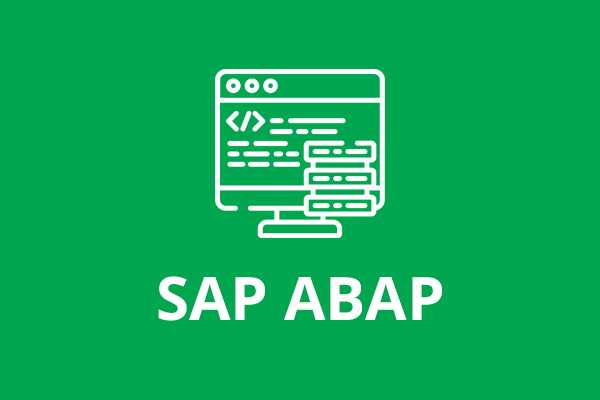Job Meter = High
SAP ABAP
10 Hours
Self-paced Training (pre-recorded videos)
GBP 200

About this Course
It is good to learn
SAP ABAP
Course Details & Curriculum
- Overall introduction to ERP
- Introduction SAP R/3 architecture, Introduction to SAP ABAP/4
- ABAP/4 editor (Focus on the functionalities of new ABAP editor)
- Data types
- Output statements
- Writing small programs
- Arithmetic operations
- String operations
- Control statements
- Parameters
- Open SQL –statements {insert, modify, delete, update}.
- Simple reporting
- Selection screens
- Transaction code creation
- Data Dictionary
- Tables
- Data element
- Domain
- Structures
- Search helps
- Views
- Type Groups
- Table maintenance generator and T-code creation
- Primary and foreign keys.
- Check and value tables.
REPORTING
- Debugging techniques
- Breakpoint creation.
- Watch point creation.
- Emphasize on the usage of New Debugger.
- Modes of Debugging.
- System Debugging.
- Update Debugging.
- Background Debugging.
- Debugging Background Jobs.
- Internal tables
- Declaration
- Type Casting
- Processing.
- Population.
- Control Break Statements.
- Modularization techniques.
- Includes.
- Subroutines.
- Function modules.
- Macros
- Variants.
- Conversion exits.
- For all entries and joins {inner and left outer}.
- Message class creation & message types and handling messages.
- Events for classical reports.
- Events for interactive reports.
- Hide and hotspot.
- Creating and handling buttons.
- Menu painter.
ABAP OOPS
- Fundamentals of OOPS.
- Introduction to Local classes and methods
- Importance of Public, Private and Protected sections.
- Simple reporting using local classes and methods.
- Global classes and interfaces.
- Usage of global classes in the reports.
- Class Based Exception Handling Mechanism - Exception Classes.
|
ALV |
|
DIALOG PROGRAMMING
INTERFACE PROGRAMMING |
|
- Why Data Transfers
- Introduction to BDC.
- File Handling.
- Presentation server.
- Application server.
- Recordings.
- Methods in BDC.
- Call transaction.
- Session method.
- Error Handling in Call Transaction.
- Legacy System Migration Workbench (LSMW)
- Different methods.
- Steps to Create an LSMW Project.
- Flat file creation.
- Uploading data.
SAP Scripts
- Introduction.
- Layout Sets.
- SAP Script Elements.
- Modifying standard layout sets (by using subroutines).
- Including logo.
- SAP script Control Commands.
- SAP Scripts Operations using different standard RSTX* Programs.
- Multi Language Handling in SAP Scripts.
SMARTFORMS
- Working with smart forms.
- Standard Texts.
- Graphics management.
- Writing print program and designing layouts.
- Output type configuration to standard orders.
FUNCTION MODULES
- Concepts of Function Group.
- Different Types FMs.
- Concepts of FM interface.
- Concepts of Update Programs.
|
IDOCS |
|
||||||||
|
|||||||||
Career Path
Good to move as Carrer
FAQs
Will this course help me clear the certification exam? +
Which is better - Self-paced training or Instructor-led training? +
Who are the trainers? +
What if I miss a class? +
How will I execute the practical? +
Is the course material accessible after completion of the course? +
Is there any offer/discount that I can avail? +
Will I get a refund if I cancel my enrollment? +
What if I have queries after completion of the course? +








